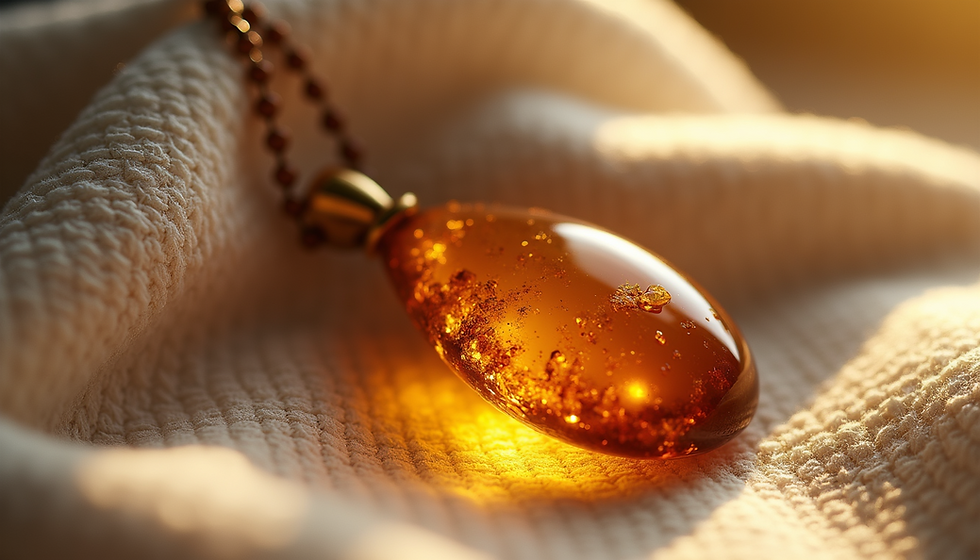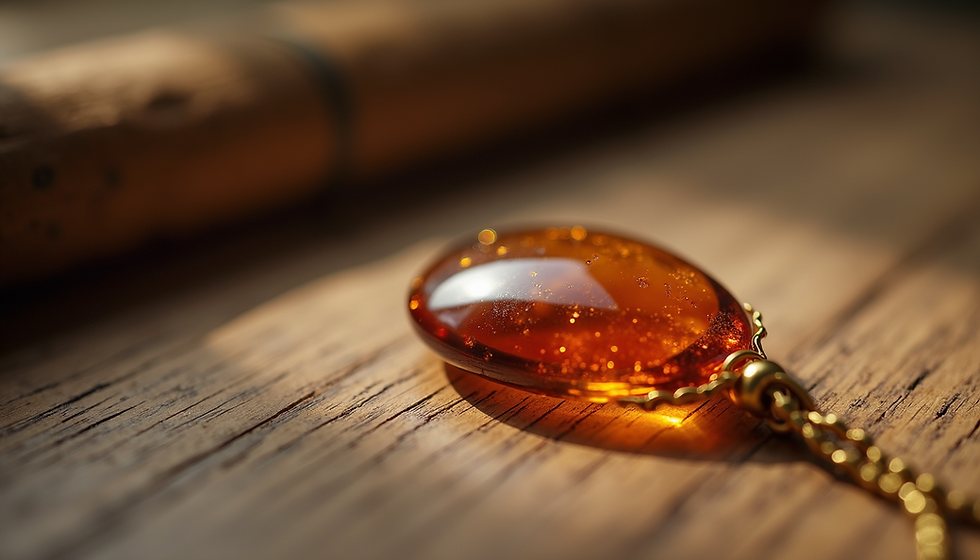Have you ever wondered...?
- Andzia Stout
- Jan 16, 2022
- 2 min read
Amber as a Therapeutic
Amber is not, as most commonly thought and published, the resin of pine trees. Amber is the vascular tissue of the trees, exuded from injury, illness and radical climate change. The trees creating the amber wept copious tears of protection. And, since the trees were thought to be 500-1000 feet tall, the amber tears, which were many, collected a lot of material on the way down. Flowers, bugs, seeds, feathers, pollen, pinecones, even tiny salamanders and teeny frogs eventually found themselves trapped in amber for eons, some destined to become showpieces in museums and private collections around the world. Others destined to remain in the ground or in the sea for millennia. Lost worlds just waiting to be found.

And even as many of the lost worlds stayed hidden from man, many ancient amber treasures have slowly been revealed, some by luck, some by chance and others through organized efforts. Who was it, I wonder that had the curiosity or possibly, the need for medicine that made her pick up some pieces of amber and work with them and more importantly believe in their restorative powers. Who was that person and how did she come to know the power of amber so intimately?
Rubarb, rododendriums, broccoli (to name but a few) all contain succinic acid which is widely used in medicines and pharmacuticals today. One stalk of broccoli contains about 1/1000 of the succinic acid found in one very tiny piece of Baltic amber. Of course, today the succinic acid found in our prescription medications is synthetic. Baltic amber contains 3-8% succinic acid, bragging rights that no other kind or type of amber can compete with.
It is noted that succinic acid is not found in fossil resins that are similar to amber.
Succinic acid is widely used for literally thousands of widespread applications. We see it daily in our lives, in fact we are surrounded by it! Think plastics, paints, perfumes, make up, medicines, dyes and pesticides. Not that the ancients were ready for plastics, but they were ready for and eager to receive healing medicines and beauty enhancements.

Even the smell of amber was considered as an effective cure. In the Middle Ages, plagues swept across villages and towns, sickening and killing many. Fumigation made by the smoke of burning amber was recommended as a preventive and curative measure. It has been noted that during the Great Plague, not one amberman from Gdansk (Poland) Klaipeda (Lithuania)or Konigsberg (Kaliningrad, Russia) died of the disease. And today, amber smoke is still used in aromatherapy.
The first written work about amber (Succini Historia 1851) was written by a doctor. It's not surprising that a doctor would write about the effects and properties of amber. Most likely doctors witnessed amber in action and were impressed with its medicinal properties. For centuries amber was used as an antibacterial agent---amber baby spoons, cigarette holders and pipe mouthpieces to name a few.
The highest content of succinic acid is found in the amber cortex, the external layer of the stone, commonly called the amber “bark” or amber “skin.” Amber made into necklaces, bracelets or pendants made from lightly ground amber or raw amber can not only be a beautiful accessory but also a theraputic one.





Comments